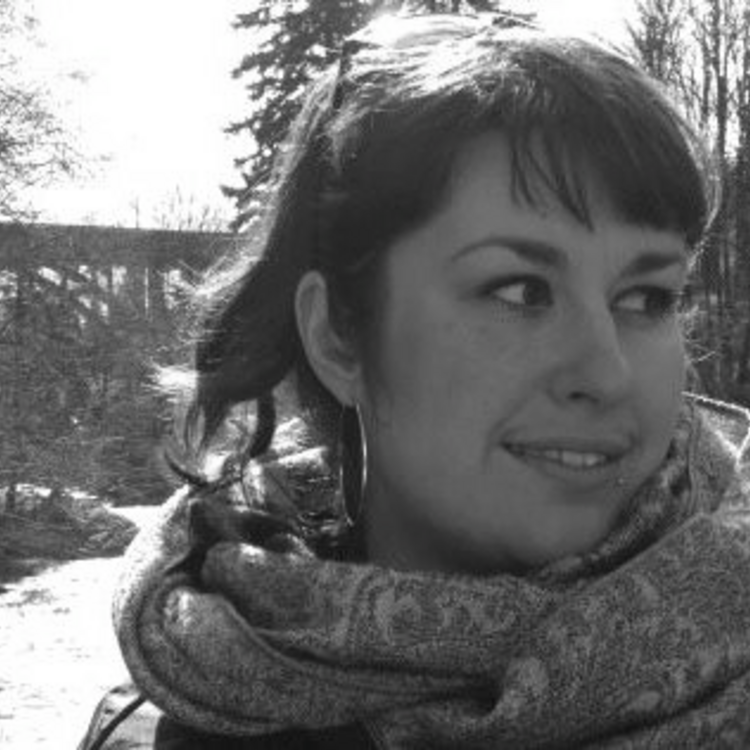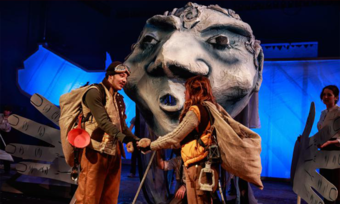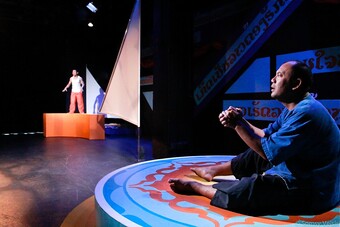Bridging Heritage and Art at the Innovate Heritage Conference
Watch the livestreaming of the entire conference on HowlRound TV this Friday, June 6 to Sunday, June 8. View the livestreaming schedule here.
When one begins to describe the initiative Innovate Heritage: Conversations between Arts and Heritage, the question always comes, “But what do you mean by ‘heritage’?” And then there is the flip side of speaking with people within the heritage sector who are often a bit unclear by what we mean by “art” within a heritage context. One way I started to explain it is the bridging of ideas, structures, value systems, language and theory from UNESCO World Heritage with contemporary art and performance that deal with memory or heritage of environment, landscape and historical aspects of cultural identity and tradition. Performed or living heritage can be another way to talk about it, and our question goes into ideas of how we see ourselves in relationship to the past, how we live or reconstruct tradition and lineage, and where do creativity and imagination come into play; when does something become heritage or the past as we perform and dream it now and in non-linear cycles.
Innovate Heritage was started last spring by my colleague Caterina Benincasa (Italy) and myself (US) through discussions we had during our MA program in World Heritage Studies at the Brandenburg University of Technology (an international, tuition free MA program in English outside Berlin, Germany). Through our course, Discourses on Culture and Heritage (led by Klaus Zehbe and Manuel Peters), we built on the foundational knowledge of the UN, UNESCO, the World Heritage Convention of 1972 and the Intangible Heritage Convention of 2003, and developed it into a stronger critical analysis of constructs of culture and heritage.
Inspiration came from thinkers such as Stuart Hall who wrote about racial structures in relationship to constructs of UK/British/”English-ness”; Watsuji Tetsuro (Climate and Culture) who shares his perspectives on the Japanese cultural value system and the inseparable and responsive interactions between self and environment; Sven Ouzman from South Africa who speaks about shifting definitions of architecture or biodiversity for protected heritage areas by UNESCO and about non-western landscapes based on stories of origin; and Laurajane Smith (Uses of Heritage) who speaks for aboriginal value structures and memory that are disregarded within western scientific heritage.
Caterina and I began to long for a more critical and fringe discourse around heritage and found that creating a conference in order to quench this curiosity was our next plan of action (and we have not been disappointed!).
So, what is meant by preserving something of the past today for the generations of the future? All these notions and ideas of heritage are based on hierarchies of memory (as photographer Mudi Mudaya, one of our speakers this year from Nigeria, put it the other day). Heritage is a projection of what we deem valuable from the past and how we would like to frame our current cultural identity (which speaker Deborah Withers from the UK is dealing with in relation to archives and constructs of memory in her talk on feminist “contemporary intangible heritage”). Beyond hierarchies of memory, much about the concept of heritage (“natural” or “cultural”) within the frame of UNESCO goes back into mostly western cultural hierarchies, definitions and value systems.
Why are most of UNESCO World Heritage sites located in Europe/western countries? How is heritage even defined and by/for whom? Most communities and cultures have some relationship and value system connected to what has come before, with varying relationships to time/space, but is it valid if its not certified by an “expert”?
The ideas of creativity, imagination, even play, have a huge role in our ideas of the past. What stories are told to us and their purpose or message, school of thought/practice, heroes, lineage, and family all tell us of who we are based on our projections and interpretations of the past. The aspects and questions around cultural equity within the arts, which I have been honored to engage with through my mentors and elders within the National Performance Network (New Orleans), is another key aspect that touches both notions of the arts and heritage in concepts of authorship, museumification of cultural stereotypes and expectations, and resources. Who is allowed to draw on cultural tradition in a creative process and still be considered a “contemporary” artist? When does something become “heritage” or “tradition” and what attains status or gains cultural currency?
Through this first Innovate Heritage: Conversations between Arts and Heritage conference, with nearly forty speakers and artists from over thirty countries, we hope to open dialogue around some of these issues and many more that continue to expand, reconnect and inspire us. Through lectures, seminars, panel discussions, an exhibition, performances and films, Innovate Heritage will bring together scholars, artists, heritage/cultural professionals and practitioners to foster dialogue and explore relationships, to promote creative approaches to theoretical and practical issues, and enhance collaboration between artistic and heritage research and practice.
For more information, please visit innovateheritage.com.













Comments
The article is just the start of the conversation—we want to know what you think about this subject, too! HowlRound is a space for knowledge-sharing, and we welcome spirited, thoughtful, and on-topic dialogue. Find our full comments policy here